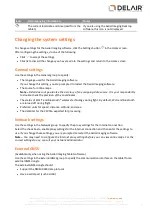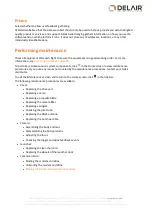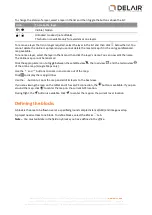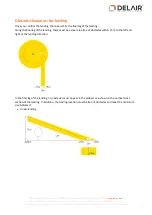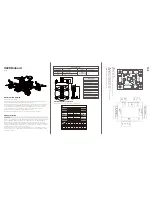
Importing an avoidance zone
l
From a KML file, click
. All polygons in the KML file appear as avoidance zones on the map and in the
map layers list.
l
From a SHP file, click
. All polygons in the SHP file appear as avoidance zones on the map and in the
map layers list.
Editing an avoidance zone
Note –
To disable editing of an avoidance zone, select the zone and then click
above the map layers
list.
Select the zone on the map or in the map layers list and then do one of the following:
l
To resize or reshape the avoidance zone, click and move the boundary points
on the map.
l
To reposition the avoidance zone, click and move it on the map.
l
To rotate the shape, click and hold the arrow
on the zone and drag your mouse over the map.
l
To add a boundary point, click the edge of the shape.
l
To delete a boundary point, click and drag the point to one of the other boundary points.
Note –
It is not possible to add or remove boundary points for a rectangular or ellipsoidal zone.
Adding information from files
Click
to add the following types of files as a map layer:
l
KML files containing points, lines, polygons, and text.
l
SHP files containing points, lines, and polygons.
l
GPX files containing points and lines.
l
CSV files containing ground control points (GCPs).
The format for the CSV file is: Identifier, Latitude, Longitude, Altitude. The coordinates must be in
decimal degrees in the WGS84 coordinate system and the altitude in meters. There should be no
header.
Managing map layers
The
online map
is the map's default layer. The online map is always the bottom layer and cannot be moved
up.
An offline or GeoTiff layer sits above the online map and below any other layer, such as avoidance zone,
KML, SHP, or GPX file layers.
New layers always become the top layer. Layers at the top of the list appear as the top-most layers on the
map. Click
next to the layer's name to move layers up and down the list.
The
icon indicates which georeferenced map is the master map. A master map is used as the reference
for drawing shapes. The online map is always the master map when it is available (there is an Internet
connection and the online map layer is visible).
26
Delair-Tech
|
676, Rue Max Planck – 31670 Toulouse-Labège, France
|
Tel: +33 (0) 5 82 95 44 06
|
Capital: 238 110,30 € - APE: 3030Z – Intra-Community VAT number: FR90 53 09 69 781 – 530 969 781 R.C.S. Toulouse
This document is the sole property of Delair-Tech and cannot be used or reproduced without the written authorization of Delair-Tech
.





